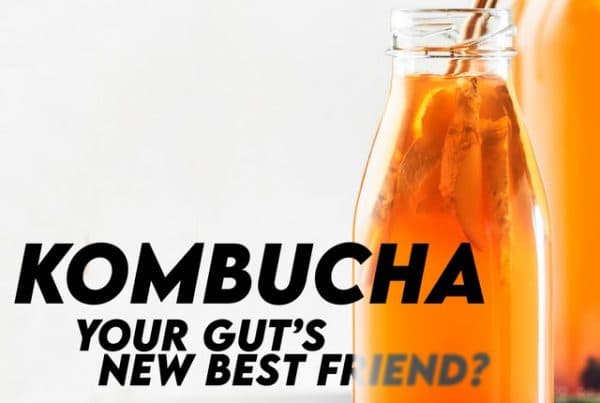For people with Coeliac Disease, following a strict gluten-free diet is crucial. If you still live at home or have housemates, there are some extra precautions that you need to take to ensure you don’t accidentally ingest any gluten. It can be tricky and annoying to be so careful all the time, but it is well worth the time and effort. Even the smallest amount of gluten can cause extensive damage to the small intestines that can take many months to repair. So, if you would like to help yourself or your loved one manage their illness, read on for more information on food preparation for Coeliac Disease.
What is Cross-Contamination?
Cross-contamination occurs when foods that contain gluten, have come into contact with foods that do not contain gluten. Let’s use toasting bread as an example. If you have family members who don’t have Coeliac Disease, they may have normal bread at home, while you have gluten-free bread. When toasting bread, there are always crumbs left behind no matter what! This includes in the toaster, on the kitchen bench, and in the butter dish. If everyone is having toast for breakfast, you might experience some cross-contamination from gluten-containing bread because you used the same butter as someone else. It is possible that crumbs left in the butter by one of your siblings has come into contact with your gluten-free toast. The same can be said for using the same toaster as your non-Coeliac Disease housemates.
What Happens When I Ingest Gluten?
When someone with Coeliac Disease consumes gluten, it triggers an autoimmune reaction within the small intestine. The small intestine is covered in tiny finger-like projections called villi. The villi are responsible for absorbing nutrients in the food we eat. When the villi come into contact with gluten, it causes inflammation, which can result in the number of villi decreasing, as well as flattening out. This means that any vitamins and minerals from our food that are passing through the small intestine, are unable to be absorbed and can lead to nutritional deficiencies if left untreated. Coeliac Disease sufferers who unknowingly (or deliberately) continue to consume even the smallest trace amounts of gluten from time to time also put themselves at risk of developing something as serious as bowel cancer.
How to Avoid Cross-Contamination at Home
Avoiding cross-contamination is equally as important as avoiding foods that contain obvious gluten. Cross-contamination can occur when preparing, cooking, and serving food. There are a number of steps that you can take to avoid cross-contamination at home.
Storing Food:
Storing gluten-free food in separate containers can help to reduce any contamination from gluten-containing products. It is important to clearly label any containers that are filled with gluten-free products, so your family members don’t accidentally use them. You can even go one step further and place any gluten-free foods in a separate area of the pantry. This includes all snacks (rice crackers or popcorn) and baking ingredients like rice flour or almond meal.
When it comes to the fridge and freezer, the same rules apply. Don’t forget to also label any food that has been removed from its originally packaging, so you know exactly what you’re reaching for.
Preparing Food:
When preparing food, the first step you and everyone else needs to do is to wash their hands. If someone is making dinner for the whole family, it is also crucial that they wash their hands after handling gluten-containing foods. It’s also good to check and make sure that all cooking surfaces, utensils, and appliances are clean and free from any traces of gluten. This includes all cooking pots, chopping boards, knives, and wooden spoons, as well as toasters, a sandwich press or jaffle iron, and baking trays.
If you’re preparing food for yourself, inspect any condiments (butter, jam, mayonnaise, mustard, dip etc) for signs of crumbs or possible contamination. If you’re ever unsure, don’t risk it. Avoid using the condiment or sauce all together. It might even be a good idea to have a stock of your own condiments. As with storing gluten-free foods, make sure to clearly label everything. Try placing anything at the back of the fridge where it’s less likely to be confused by the rest of the family.
Cooking Food:
If gluten-free and gluten-containing food are being prepared together, try using separate cooking pots, pans, and stirring utensils, or thoroughly washing them between use. When frying food, fresh oil should be used too! Better yet, if the same pots or oil are being used, cook any gluten-free foods first, then followed by gluten-containing foods.
As we know, pasta is a staple for every family. When cooking pasta, the same rules apply with the pots and cooking water. Make sure the pot is thoroughly clean and use fresh water. Don’t forgot to clean the pasta strainer too.
When to See a Dietitian
If you have recently been diagnosed with Coeliac Disease, you also need to become aware of foods that contain gluten and those foods that are naturally gluten-free. An Accredited Practising Dietitian can help guide you to make the best choices for your overall health within the constraints of a gluten free diet. They can ensure that you aren’t missing out on any key nutrients that are typically found in gluten-containing foods and help you find gluten-free alternatives for your favourite foods.
To become ‘ingredient aware’ or for more information on food preparation in Coeliac Disease, visit an Accredited Practising Dietitian to receive advice that is tailored to you.







